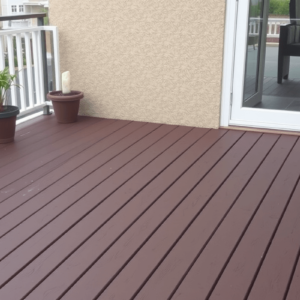Wood Look Composite Fencing: Transform Your Outdoor Space with Durability and Ease
The Transformation Potential of Wood Look Composite Fencing
When it comes to enhancing the aesthetics of your property, a wood look composite fence is an excellent choice. Unlike traditional wooden fences, which require frequent maintenance and are susceptible to wear and tear, composite fencing offers a low-maintenance alternative that retains the natural beauty of wood. These fences are designed to withstand harsh weather conditions and resist rot, insects, and fading, making them a durable option for any outdoor space.
Installation Tips for Wood Look Composite Fencing
Installing a wood look composite fence is relatively straightforward but requires some basic knowledge and tools. First, you should ensure that your fence posts are set in concrete and anchored securely into the ground. This will provide stability and prevent the fence from leaning or collapsing over time. It’s also crucial to follow the manufacturer’s instructions carefully when assembling the panels to ensure a proper fit. If you’re not confident in your ability to install the fence yourself, consider hiring a professional contractor who has experience with composite materials.
Maintaining Your Wood Look Composite Fence
Maintaining a wood look composite fence is considerably easier than maintaining a traditional wooden fence. Unlike wood, composite materials do not require painting or staining, reducing the amount of upkeep needed. However, regular cleaning is still necessary to keep the fence looking its best. Use a mild detergent and water to clean the fence periodically, and avoid using abrasive cleaners or tools that could damage the surface. Additionally, it’s a good idea to inspect the fence annually for any signs of wear or damage and address these issues promptly to prolong the life of your fence.
Environmental Benefits of Wood Look Composite Fencing
One of the most significant advantages of wood look composite fencing is its positive impact on the environment. Traditional wooden fences often require the use of pressure-treated lumber, which can contain harmful chemicals that leach into the soil and waterways. In contrast, many composite fences are made from recycled materials such as plastic bottles and wood fibers, reducing waste and conserving natural resources. Furthermore, because composite fences last longer than their wooden counterparts, they reduce the need for frequent replacements, further decreasing their environmental footprint.
Comparative Analysis: Wood vs. Composite Fences
When comparing wood look composite fencing to traditional wooden fences, several factors come into play. While wooden fences may offer a more authentic appearance and can be customized through painting or staining, they require significantly more maintenance and have a shorter lifespan. Composite fences, on the other hand, offer a balance between aesthetic appeal and practicality. They are resistant to rot, insects, and fading, making them a more durable and low-maintenance option. Additionally, composite fences are often more cost-effective over their lifetime due to reduced maintenance needs and extended longevity.
Conclusion
In conclusion, wood look composite fencing is an excellent choice for anyone looking to enhance the appearance of their outdoor space while enjoying the benefits of durability and ease of maintenance. With proper installation and care, these fences can last for decades, providing a beautiful and functional boundary for your property. By choosing a wood look composite fence, you not only improve the curb appeal of your home but also contribute to a more sustainable future.





Reviews
There are no reviews yet.